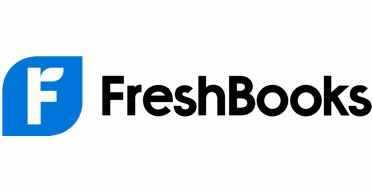Cost of Goods Sold (COGS): Definition and How to Calculate It
Calculating the cost of goods sold gives a business insight into its performance and helps calculate profit.

Many, or all, of the products featured on this page are from our advertising partners who compensate us when you take certain actions on our website or click to take an action on their website. However, this does not influence our evaluations. Our opinions are our own. Here is a list of our partners and here's how we make money.
Calculating the cost of goods sold, often referred to as COGS in accounting, is essential to determining whether your business is making a profit. It involves a simple formula and can be calculated monthly to keep track of progress or even less frequently for more established businesses.
What is cost of goods sold?
Cost of goods sold, or COGS, is the total cost a business has paid out of pocket to sell a product or service. It represents the amount that the business must recover when selling an item to break even before bringing in a profit. Cost of goods sold includes any direct costs that a business incurs in the manufacture, purchase and sale or resale of products.

What's included in cost of goods sold?
Costs of goods sold can include costs for:
- Purchasing items for resale, including shipping.
- Materials to make or manufacture products.
- Packaging such as boxes to ship orders.
- Costs for shipping and freight.
- Direct labor for making or manufacturing products.
- Sales costs such as commissions paid to salespeople.
Whether your business manufactures goods or orders them for resale will influence what types of costs you are likely to include. And not all service-based businesses keep track of cost of goods sold — it depends on how they use inventory.
For example, a massage therapist who keeps massage oil, towels and candles on hand to use when providing massages would not need to calculate the cost of goods sold because they are not selling the items to customers. Instead, they would include the cost of those items as tax deductions for operational costs.
However, a physical therapist who keeps an inventory of at-home equipment to resell to patients would likely want to keep track of the cost of goods sold. While they might use those items in the office during appointments, reselling that same equipment for patients to use at home plays a different role in cost calculations.
🤓 Nerdy Tip
Service-based businesses might refer to cost of goods sold as cost of sales or cost of revenues. What does cost of goods sold exclude?
Cost of goods sold does not include costs unrelated to making or purchasing products for sale or resale or providing services. General business expenses, such as marketing, are often incurred regardless of if you sell certain products and are commonly classified as overhead costs.
Examples of costs that are not included in the cost of goods sold include:
- Marketing.
- Rent or mortgage payments.
- Utilities.
- Equipment purchases.
- Salaries of management-level employees.
- Insurance premiums.
- Administrative costs, such as office supplies.

How is cost of goods sold calculated?
To calculate the cost of goods sold, use the following formula for your chosen time period:
Beginning inventory + Inventory costs - Ending inventory = Cost of goods sold
Here’s an explanation of each variable:
- Beginning inventory: This is the cost of goods sold for your inventory at the beginning of the time period. For example, if you started with 10 products that cost $100 each to make, your beginning inventory would be $1,000.
- Inventory costs: This amount refers to additional costs incurred for inventory purchased or produced during the time period (aside from the beginning inventory you started with).
- Ending inventory: This refers to the cost of inventory that you did not sell during the period.
Your business’s inventory cost accounting method determines how your inventory is valued, which ultimately affects your cost of goods sold, too. Here are the four most common inventory costing methods:
- FIFO: Your business’s oldest inventory is sold first, according to the first in, first out (FIFO) method.
- LIFO: If your business uses the last in, first out (LIFO) method, your newest inventory is sold first.
- Weighted average: This method is one of the simplest and averages product costs. The date inventory was purchased or produced doesn’t matter as much as it does in the FIFO and LIFO methods.
- Special identification: Each unique unit, which may be labeled with a serial number, is tracked and has its own precise cost.
If you haven’t decided on a method yet, factor in how each may affect your cost of goods sold. For more information on how to pick an inventory valuation method, read our FIFO vs. LIFO explainer.
Cost of goods sold example
Let’s look at an example. Alexis started the month with stock that had a cost of $8,300, which is her beginning inventory. Over the month, she ordered materials to make new items and ordered some products to resale, spending $4,000, which are her inventory costs. At the end of the month, she calculated that she still had $5,600 in stock, which is her ending inventory.
To calculate her cost of goods sold for the month, her formula would be:
8,300 + 4,000 - 5,600 = $6,700
🤓 Nerdy Tip
If the COGS formula is confusing, think of it this way. When you add your inventory purchases to your beginning inventory, you see the total available inventory that could be sold in the period. By subtracting what inventory was leftover at the end of the period, you calculate the total cost of the goods you sold of that available inventory. To calculate your cost of goods sold, use our calculator below.
Why you need to know the cost of goods sold
Calculating profit
Correctly calculating the cost of goods sold is an important step in accounting. Any money your business brings in over the cost of goods sold for a time period can be allotted to overhead costs, and whatever is leftover is your business’s profit. Without properly calculating the cost of goods sold, you will not be able to determine your profit margin, or if your business is making a profit in the first place.
Adjusting pricing
A business’s cost of goods sold can also shine a light on areas where it can cut back to make more profit. You might be surprised to find that you’re making less profit than you expected with certain products. By analyzing the cost of goods sold for certain products, you can change vendors to order cheaper materials or raise your prices to increase your profit.
Completing financial statements
A business needs to know its cost of goods sold to complete an income statement to show how it’s calculated its gross profit. Businesses can use this form to not only track their revenue but also apply for loans and financial support.
Article sources
NerdWallet writers are subject matter authorities who use primary,
trustworthy sources to inform their work, including peer-reviewed
studies, government websites, academic research and interviews with
industry experts. All content is fact-checked for accuracy, timeliness
and relevance. You can learn more about NerdWallet's high
standards for journalism by reading our
editorial guidelines.
Bonus offer
More like this
Related articles






